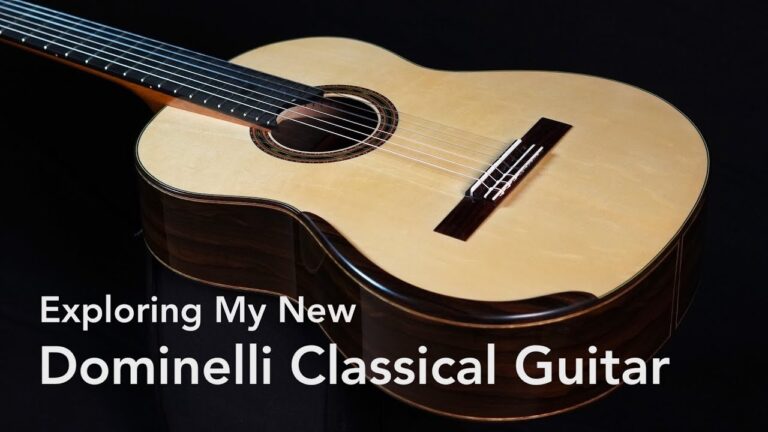I was very pleased to have a nice visit the other day by luthier Douglass Scott. Douglass came over to my home in Victoria where we also had a good chat with Marcus Dominelli. Douglass sets up shop in Ladysmith on Vancouver Island not far from Victoria, BC, Canada where I live. Many of my students and colleagues at the Conservatory and in town play on Scott guitars. You can find his instruments all over the world though as he’s been building for some time. His guitars are exceptionally clean and clear. He also defies most generalizations about guitar design as his fan brace guitars are louder and project better than many lattice or doubletop guitars I’ve played. His guitars have many modern aspects as well such as raised fingerboards and other innovations in design. He has forged himself a solid place in todays luthier circles. I personally really love his last few instruments as they have all the clarity and separation of his usual guitars but also a new sweetness that really intrigued me.
By the way, Douglass has been doing blog posts on his weekly activities and special topics and some of the posts are really fascinating! Check it out at: scottclassicalguitars.com. I’ve included some pictures of the guitar he brought by my place. It’s a beauty of Italian spruce and Madagascar rosewood.



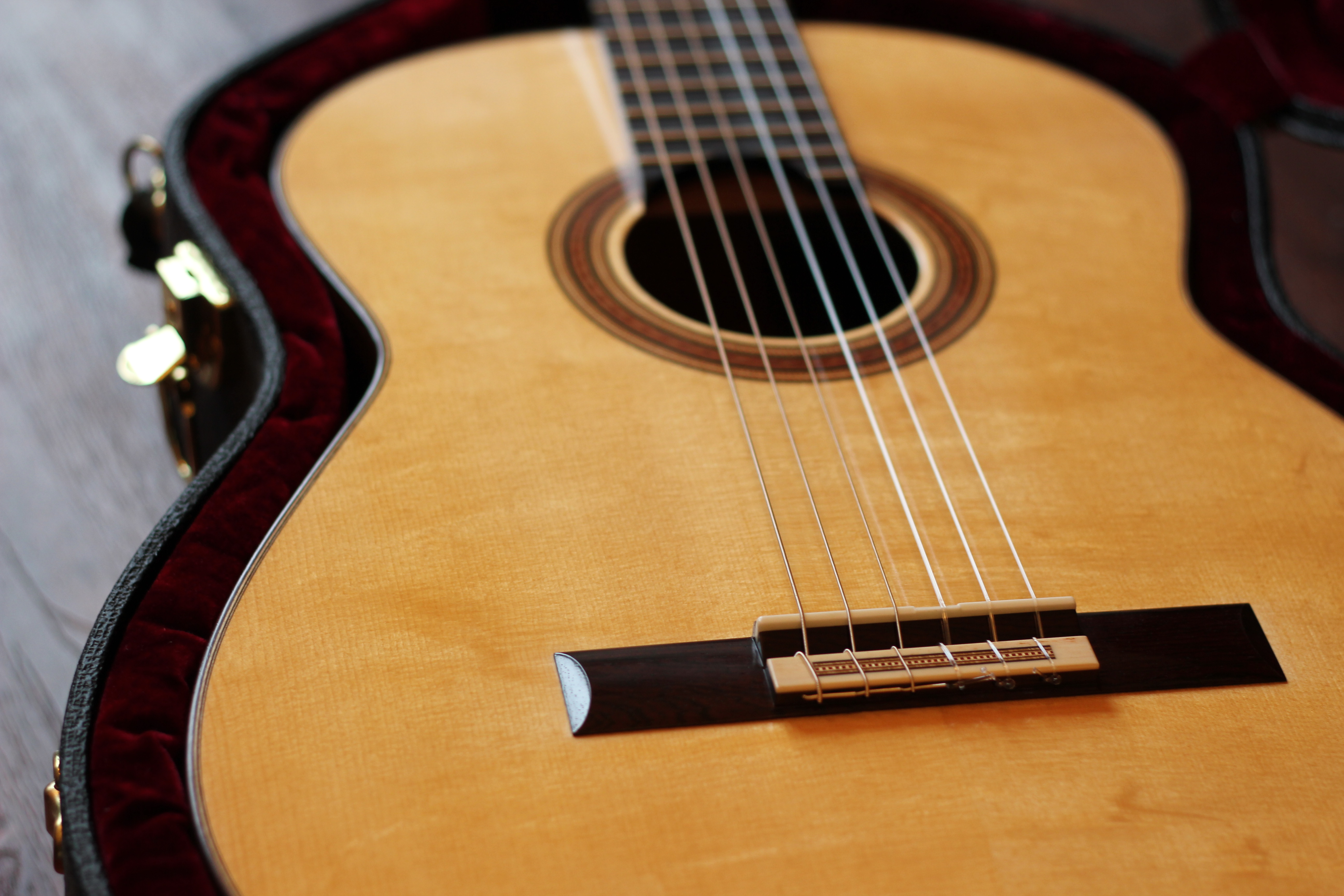
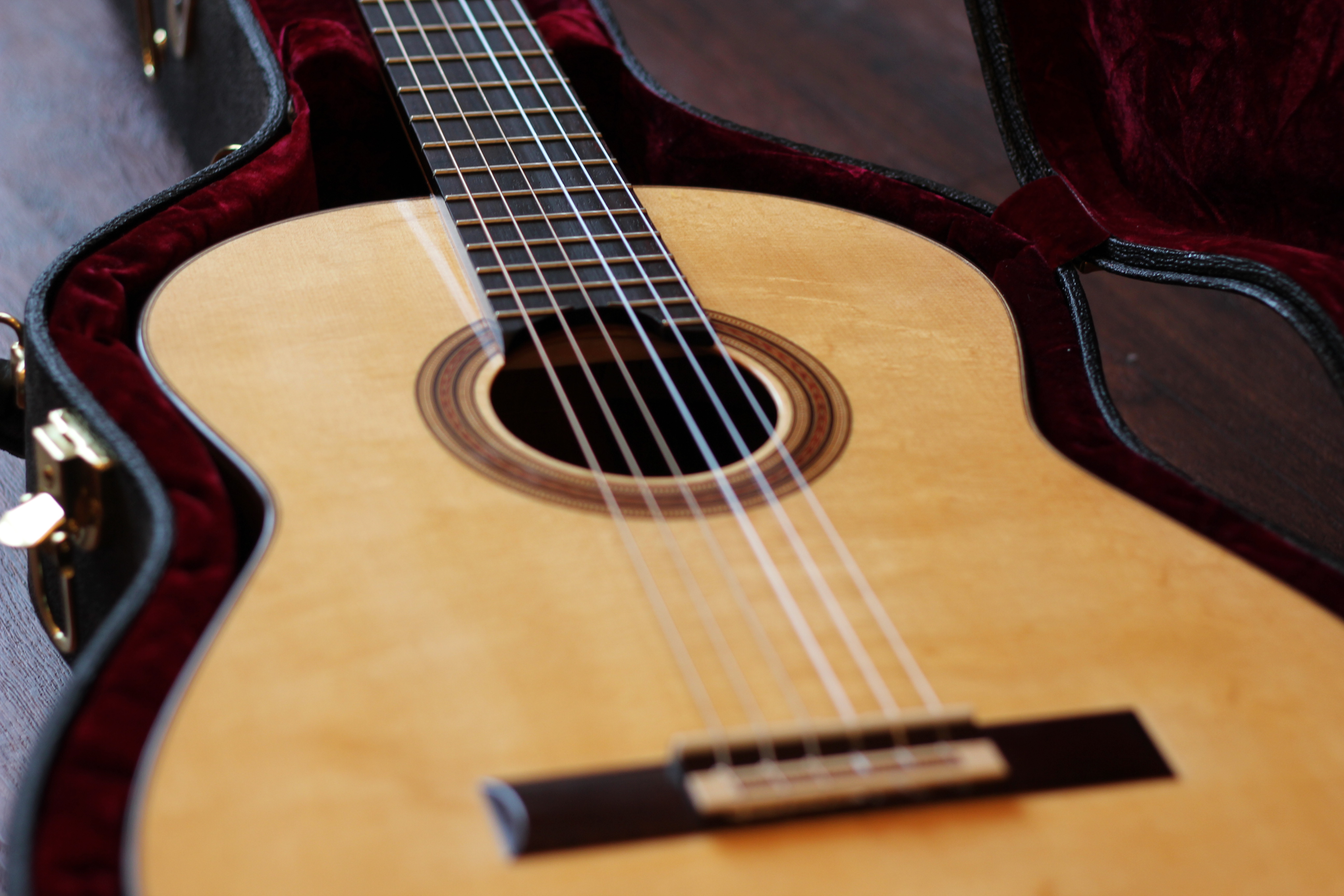
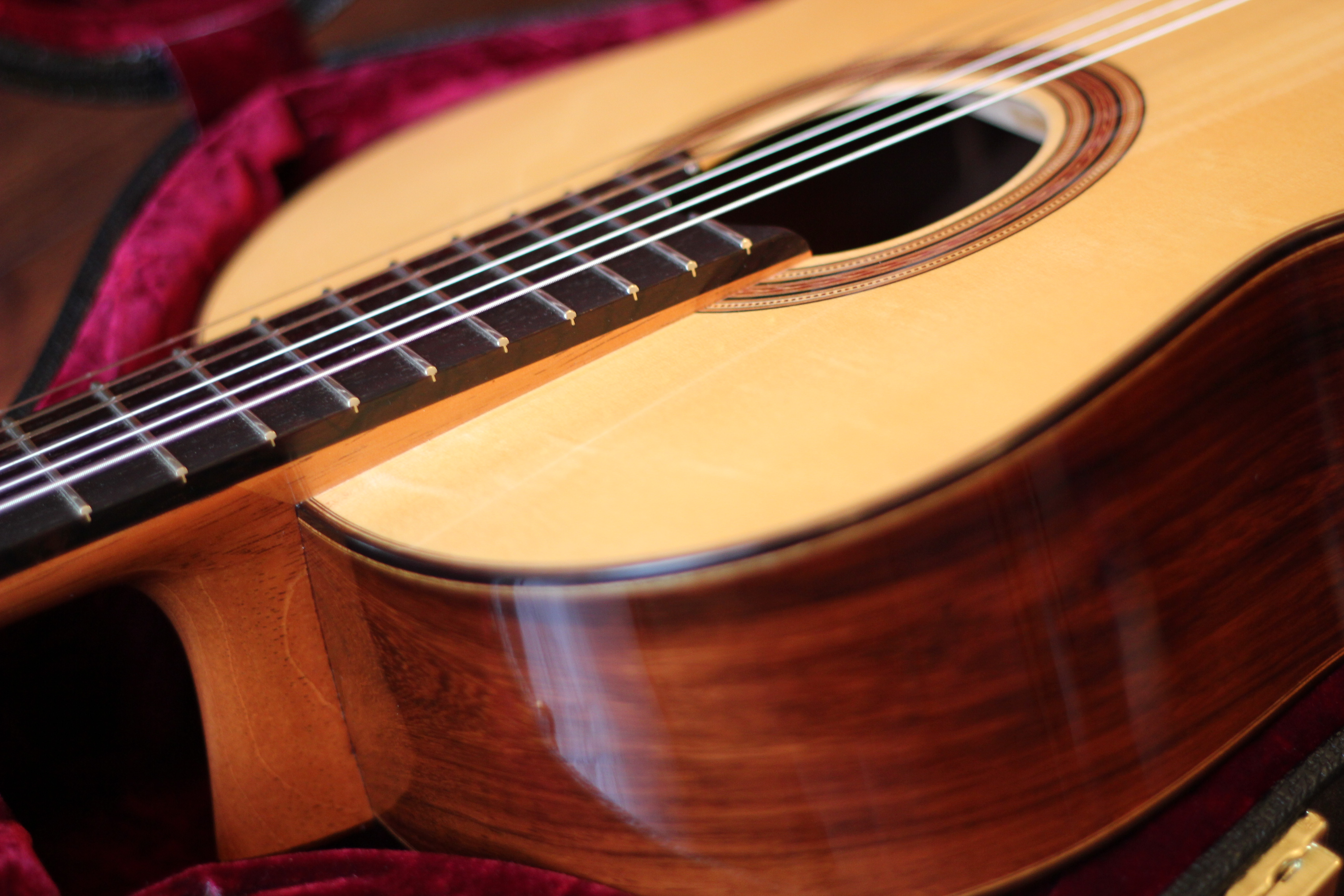
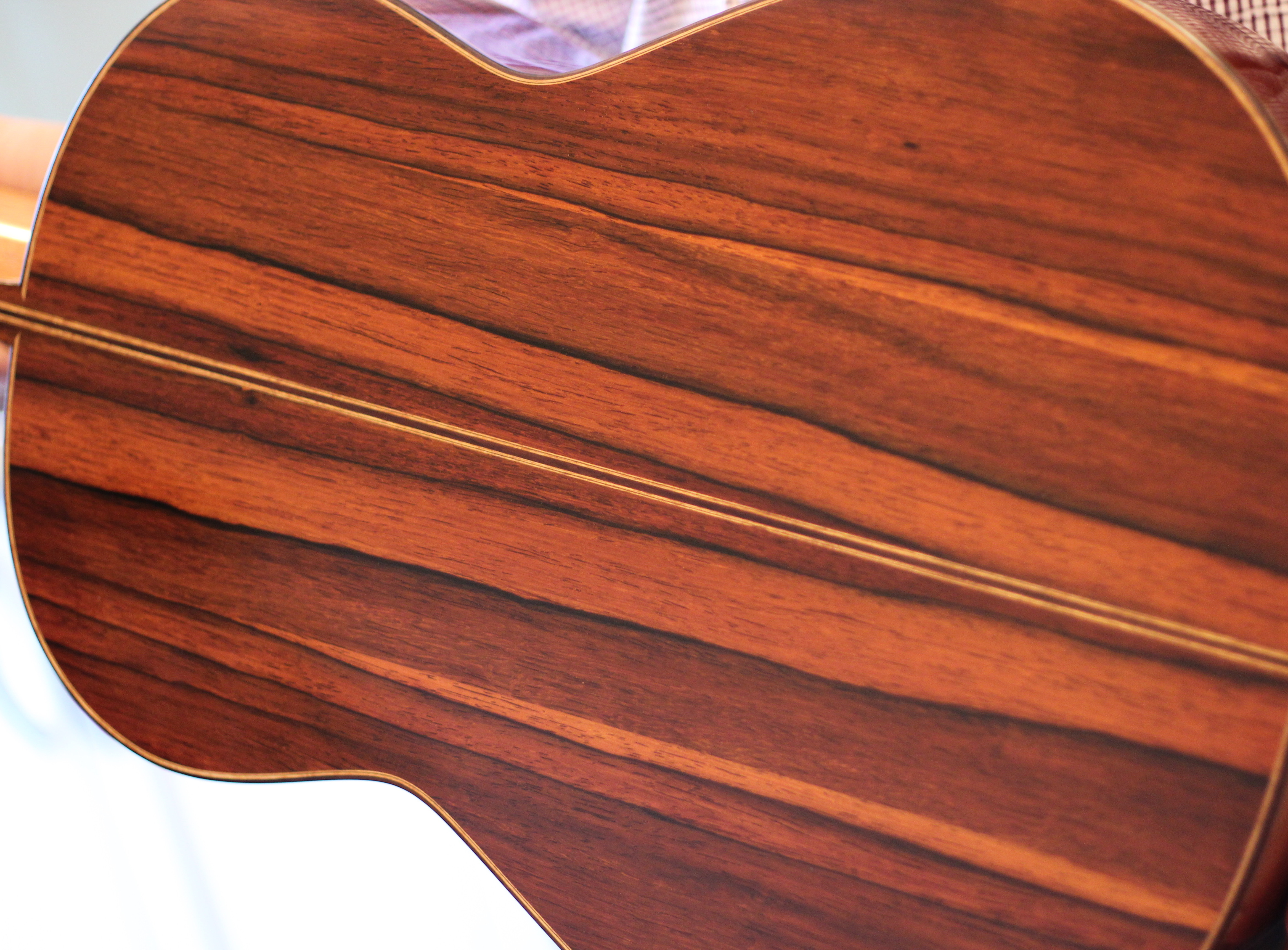
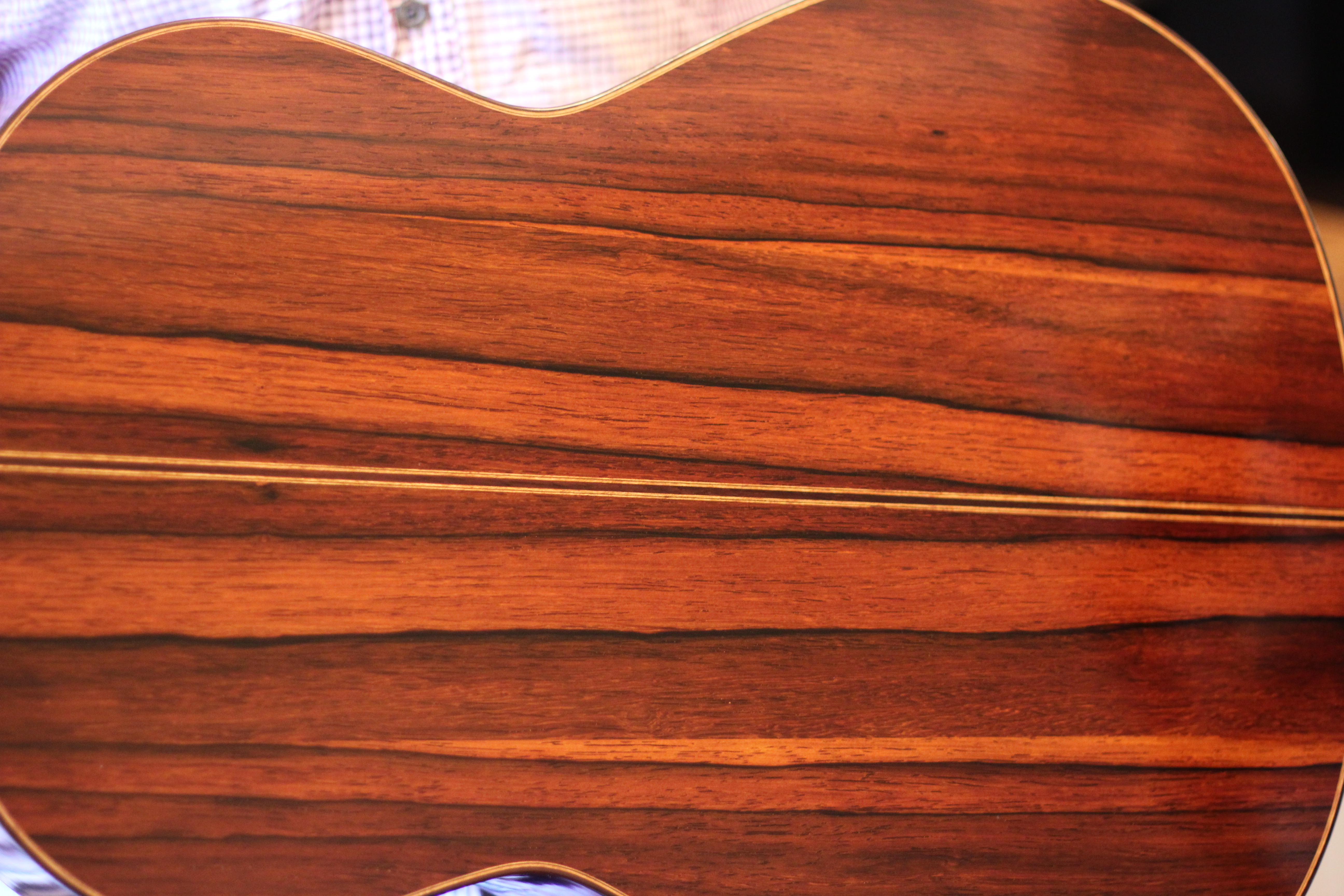

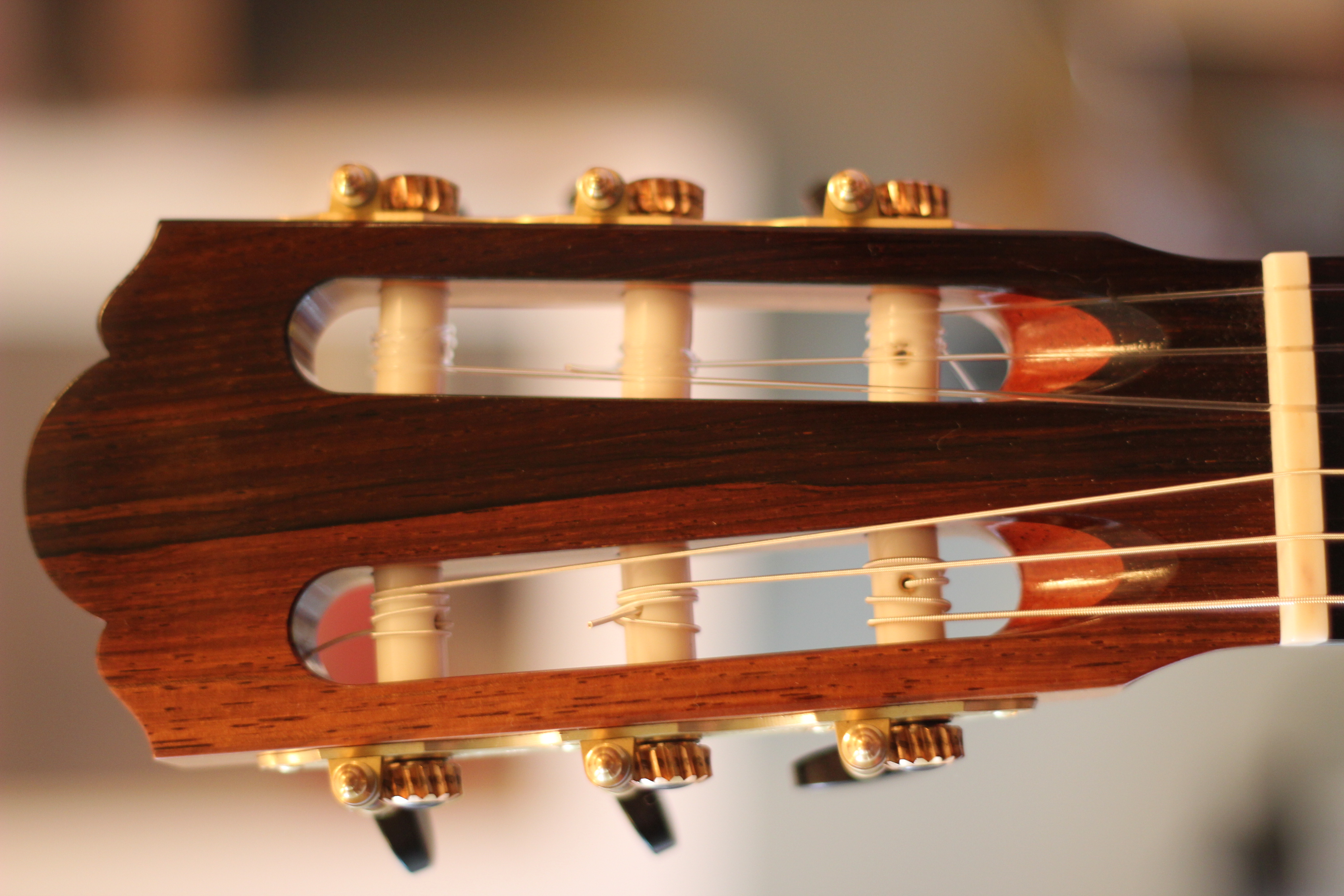
Interview between Bradford Werner & luthier Douglas Scott
via email for thisisclassicalguitar.com, February, 2014.
Bradford Werner: You have a new shop up in beautiful Ladysmith on Vancouver Island, that must be exciting. Do you have lots of building planned?
Douglass Scott: Yes! I recently moved houses and it was a good chance to upgrade my working space. Now that the new workshop is set up, it couldn’t be better. It’s a large enough space to be very productive in without tripping over guitar parts, it’s full of beautiful natural lighting, and the power tools are in a separate room from everything else so dust stays well under control. My goal here is to make guitars more efficiently so that in addition to custom orders, I can make better use of dealers and the work they do to promote my instruments.
BW: I remember seeing you play guitar during your student days at the University, you are a superb guitarist with a clean and elegant sound. When I think about your guitars I think of the same thing, clean and elegant. Do you think your own playing has shaped the style of your instruments?
DS: Wow, thanks! I don’t have as much time to practice these days…
Yes, playing guitar has definitely shaped a lot about my guitar building. A nylon guitar string plucked by a finger has a very limited amount of energy, and that strictly limits how loud a classical guitar can be. If a grand piano has a dynamic range from 0 – 10, then I’ll say an average concert guitar (heard from the audience) has a dynamic range from 0 to about 3 or 4. And the loudest classical guitar ever might have a maximum volume of around 4.5. Dynamic range is the guitar’s weakness, but timbral range is an asset if the guitar was made well, to maximize it. So I view the guitar more as a mini orchestra rather than a grand piano. I feel a guitar with a wide range of tone colours and an alluring character is the most true to its nature. Of course it’s super important to have the biggest dynamic range possible too, but not at the expense of the guitar’s special strengths.
I used to think that it was necessary for a luthier to be able to play guitar too. For example if a luthier knows first hand how different neck shapes, string spacings, fret sizes, or string tensions can impact playability, he or she can relate better with customers. I also couldn’t imagine relying 100% on other peoples’ comments as my only source of feedback. After all, few people are willing to be critical or honest about any negative impressions of a guitar they just tried out.
But lately I’ve come to realize there may be cons to being a bit of a guitarist myself. In some ways it’s limited my creativity as a guitar maker, but I think I’m over that now. Until recently, the mere fact that I had a clear opinion of what’s good or right in guitars meant that the thought of doing what anyone else liked actually never crossed my mind. I knew what I preferred as a player and wasn’t very interested in building other designs. Geeze, it sounds so silly now that I say it. Apparently I didn’t start making guitars because I was a good business man! A major part of guitar building has been learning more about business than I ever thought I would. It’s actually become a real interest for me. I know some luthiers who aren’t too attached to any particular kind of instrument themselves, and they simply build what seems to sell the best. It’s not my nature, but I really admire that and it certainly makes good sense. Now that I finally think more like a luthier than a guitarist, those personal preferences that shaped my guitars to be the way they are today aren’t the only important criteria any more. The thought of creating designs to specifically suit different types of classical guitarists is actually exciting now.
BW: I feel like your guitars are very consistent these days but maybe the last few I’ve heard are a bit sweeter in sound. Are you still experimenting with designs and alterations?
DS: Design-wise I’m doing a lot more active experimentation these days than I have for several years. Over the four or five years up to 2013 I stuck with basically the same design for all of my guitars. During that period, each guitar was made with only small intentional variances in places like brace positions and dimensions, plate thicknesses, soundboard material properties etc. in order to tweak the outcome and learn more about the effect each element has on the final guitar. Doing that was very educational, and also helped make my guitars really consistent.
The past year or so I’ve been moving into some new design territory in order to pursue my (ever-changing) idea of the ideal sound and response. My guitars definitely still sound like my guitars though. As far as the sound is concerned, a guitar’s design is secondary to how the luthier uses the design. So when I change soundboard bracing patterns, but aim for a similar overall stiffness, mass, and frequency response as I do with another bracing pattern, the guitars will sound very similar. But the point of a new pattern is to discipline the top in a way that wasn’t possible before – to improve things! So of course I want to take advantage of those opportunities, while keeping the overall soundboard behavior within a range that I’m comfortable with. That part is important for consistency, which is really important to me. I think it gives customers confidence that I can meet their expectations, and it also means that I know right away what effect some experimental tweak might have had on a guitar I just made.
I think the sweeter sound you’ve noticed recently in my guitars could be due to the particular European spruce I’ve been using the past couple of years. It’s pretty unique spruce, low density, not too stiff, but very springy instead of brittle like other spruces I’ve used, and some has dramatic haselfichte (also called bearclaw figure), which seems to affect the wood’s cross-grain to long-grain stiffness ratio and density a little.
BW: Wood supply, what kind of woods are you into these days? Is it local or all over?
DS: The woods I use most these days are basically traditional classical guitar standards: western red cedar from this coast of Canada or spruce from Europe for soundboards; Indian rosewood, Madagascar rosewood, Brazilian rosewood, or Bosnian (aka European) maple for backs and sides; Spanish cedar or mahogany for necks; ebony or sometimes Brazilian rosewood for fingerboards. About a year ago I just couldn’t resist a beautiful cedar log that had washed up on the beach in my town. I chainsawed it into manageable chunks early one morning (I mentally apologized to the hundred or so folks who live within earshot of the beach) and brought it home to dry. It’ll make around 50 tops that should be excellent quality, some with perfectly uniform colour and some with dramatic colour striping.
Like most luthiers, I’m quite concerned about the dwindling supply of our staple exotic and not-too-exotic woods, like the rosewoods, ebony, spruces, mahogany and Spanish cedar – that’s every piece of wood in a traditional Spanish guitar! Guitar makers are not the reason why these species are so strained, but we’d all do well to start looking at and accepting more sustainable alternatives to the “traditional” tonewoods. Of course luthiers, especially steel string guitar makers, have been using domestic or local woods for many years, but so far there has been limited market acceptance of alternative woods in the classical guitar scene. That’s not because they don’t work well or sound good. It’s mostly just because they look funny. People aren’t used to seeing them on classical guitars.
BW: What’s next for Douglas Scott guitars?
DS: Well, I’m working on creating another model of concert guitar. One that will arise from a somewhat contrasting paradigm to the instruments I’m already making. I will always continue to build the very traditional guitars that I’m building now, I love this kind of guitar too much. I’m very reluctant to get into double tops or the Smallman type of lattice construction, or to go back to the much simpler all-wood lattice designs that I toyed with years ago. They aren’t quite the thing I’m looking for and besides, they’re being done so well by so many other luthiers. I haven’t yet nailed down a solid design, but it’s in the works for sure.
Other than that I’ve recently started a blog on the home page of my website. That’s a huge deal for me, who’s a bit of a social media cynic. It’s been fun so far. My intention is to write a post each week or so summarizing what I’ve been up to at work and give behind the scenes stories and tidbits from a guitar maker. There’ll be some extra posts too on other topics that come up from time to time.
CHECK OUT DOUGLASS SCOTT’S WEBSITE & BLOG:
scottclassicalguitars.com



